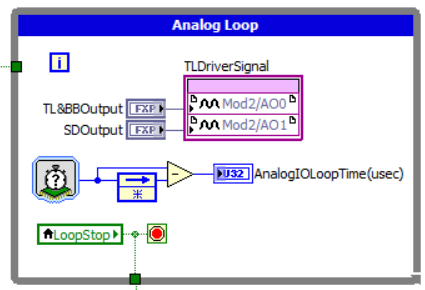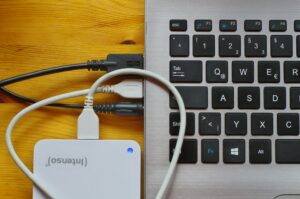Developing LabVIEW Applications for Industrial Automation

Introduction
Industrial automation involves using control systems such as computers, PLCs (Programmable Logic Controllers), and robots to operate industrial processes with minimal or no human intervention. Automation increases productivity, quality, and safety while reducing costs and variability in manufacturing and production processes. LabVIEW (Laboratory Virtual Instrument Engineering Workbench) by National Instruments is a powerful graphical programming environment widely used for developing industrial automation applications. This comprehensive article will explore the concepts, tools, and methodologies for developing LabVIEW applications for industrial automation.
1. Fundamentals of Industrial Automation
1.1. What is Industrial Automation?
Industrial automation refers to the use of control systems and information technologies to handle different processes and machinery in an industry to replace human intervention. It encompasses various aspects, including:
- Control Systems: Automated control of machines and processes using PLCs, DCS (Distributed Control Systems), SCADA (Supervisory Control and Data Acquisition), and other control devices.
- Sensors and Actuators: Devices that monitor and control physical processes.
- Robotics: Use of robots for performing tasks that require precision, speed, and endurance.
- Communication Networks: Industrial networks that facilitate communication between different control systems and devices.
1.2. Benefits of Industrial Automation
The key benefits of industrial automation include:
- Increased Productivity: Automation systems can operate 24/7 without fatigue, leading to higher production rates.
- Improved Quality: Automation reduces human error, ensuring consistent product quality.
- Enhanced Safety: Automated systems can perform hazardous tasks, reducing the risk of injury to workers.
- Cost Savings: Automation reduces labor costs and improves resource utilization.
- Data Collection and Analysis: Automated systems can collect and analyze data in real-time, enabling better decision-making.
1.3. Components of an Industrial Automation System
An industrial automation system typically consists of the following components:
- Sensors: Measure physical parameters such as temperature, pressure, and flow.
- Controllers: Devices such as PLCs and DCS that process sensor inputs and control actuators.
- Actuators: Devices that perform physical actions, such as motors, valves, and relays.
- HMI (Human-Machine Interface): Interfaces that allow operators to interact with the automation system.
- Communication Networks: Networks that enable data exchange between different components of the automation system.
- SCADA Systems: Software that provides centralized monitoring and control of industrial processes.
2. Introduction to LabVIEW
2.1. What is LabVIEW?
LabVIEW is a graphical programming language developed by National Instruments. It is widely used for data acquisition, instrument control, and industrial automation applications. LabVIEW programs are called Virtual Instruments (VIs) and consist of a block diagram (code) and a front panel (user interface).
2.2. Key Features of LabVIEW
LabVIEW offers several features that make it well-suited for industrial automation applications:
- Graphical Programming: Uses a dataflow programming model with intuitive block diagrams.
- Hardware Integration: Seamlessly integrates with various hardware devices for data acquisition, control, and communication.
- Real-Time Processing: Supports real-time processing and deterministic control for time-critical applications.
- Comprehensive Libraries: Provides extensive libraries for data analysis, signal processing, and control algorithms.
- Scalability: Scales from small test setups to large industrial systems with multiple devices and communication networks.
2.3. LabVIEW Toolkits for Industrial Automation
Several LabVIEW toolkits and modules enhance its capabilities for industrial automation:
- LabVIEW Real-Time Module: Enables the development of real-time applications with deterministic behavior.
- LabVIEW FPGA Module: Allows the creation of custom FPGA-based hardware for high-speed control and data processing.
- LabVIEW DSC Module: Provides tools for developing SCADA and HMI applications with features such as alarms, logging, and network communication.
- NI-DAQmx: Drivers and APIs for data acquisition hardware, enabling the collection and control of real-world data.
3. Hardware and Software Requirements
3.1. Hardware Components
Developing LabVIEW applications for industrial automation requires specific hardware components:
- Computing Platform: A PC or embedded system capable of running LabVIEW.
- Data Acquisition Hardware: Devices for collecting and controlling real-world data, such as NI CompactDAQ, NI myRIO, and NI PXI.
- Sensors and Actuators: Various sensors for data collection (e.g., temperature sensors, pressure transducers) and actuators for control (e.g., motors, valves).
- PLCs and Controllers: Programmable Logic Controllers and other control devices that can interface with LabVIEW.
- Communication Interfaces: Interfaces for industrial communication protocols such as Ethernet, Modbus, Profibus, and OPC.
3.2. Software Components
The software components required include:
- LabVIEW: The core development environment.
- LabVIEW Toolkits and Modules: Specific toolkits and modules required for the application, such as the Real-Time Module, FPGA Module, and DSC Module.
- Driver Software: Necessary drivers for data acquisition hardware and communication interfaces.
- Third-Party Libraries: Additional libraries for specific functionalities, such as advanced control algorithms and machine vision.
4. Developing LabVIEW Applications for Industrial Automation
4.1. System Design and Planning
4.1.1. Requirements Analysis
The first step in developing an industrial automation application is to analyze the requirements. This includes understanding the process to be automated, identifying the sensors and actuators needed, and defining the control logic. Key aspects to consider include:
- Process Flow: Detailed description of the process and the sequence of operations.
- Control Requirements: Specifications for the control system, including response time, accuracy, and reliability.
- Safety Requirements: Safety measures to protect personnel and equipment.
- Data Requirements: Types of data to be collected and analyzed, and the data storage and retrieval methods.
4.1.2. System Architecture
Designing the system architecture involves defining the hardware and software components, their interactions, and the overall layout of the system. Key components include:
- Controllers: Selection of PLCs, DCS, or embedded controllers.
- Sensors and Actuators: Selection and placement of sensors and actuators.
- Communication Networks: Design of the communication network for data exchange.
- HMI/SCADA: Design of the user interface for monitoring and control.
4.1.3. Functional Specification
The functional specification document outlines the detailed functionality of the system, including:
- Control Logic: Detailed description of the control algorithms and logic.
- Data Flow: Description of the data flow between different components.
- User Interface: Design of the HMI/SCADA screens and user interactions.
- Testing and Validation: Plan for testing and validating the system.
4.2. Hardware Integration
4.2.1. Configuring Sensors and Actuators
Configuring sensors and actuators involves:
- Selecting Sensors and Actuators: Based on the process requirements, select the appropriate sensors and actuators.
- Calibration: Calibrate the sensors and actuators to ensure accurate measurements and control.
- Interfacing: Connect the sensors and actuators to the data acquisition hardware or controllers.
4.2.2. Data Acquisition
Data acquisition involves collecting data from sensors and other sources. Steps include:
- Configuring Data Acquisition Hardware: Set up the data acquisition devices in LabVIEW using the NI-DAQmx drivers.
- Data Logging: Use LabVIEW’s data logging functions to store collected data for further analysis.
- Real-Time Monitoring: Implement real-time data monitoring to visualize the process parameters.
4.3. Control System Development
4.3.1. Control Algorithms
Developing control algorithms involves designing and implementing the control logic in LabVIEW. Key steps include:
- PID Control: Implementing PID (Proportional-Integral-Derivative) control algorithms for process control.
- Advanced Control: Implementing advanced control algorithms such as model predictive control (MPC) and adaptive control.
- Custom Control: Developing custom control algorithms based on the specific process requirements.
4.3.2. Real-Time Control
Real-time control is essential for time-critical industrial processes. LabVIEW’s Real-Time Module provides the tools for developing real-time control applications. Steps include:
- Real-Time Targets: Deploying the control algorithms to real-time targets such as NI CompactRIO or NI PXI.
- Deterministic Behavior: Ensuring deterministic behavior by managing task priorities and execution timing.
- Real-Time Data Exchange: Implementing real-time data exchange between the control system and other components.
4.4. HMI and SCADA Development
4.4.1. Designing the HMI
The Human-Machine Interface (HMI) allows operators to interact with the automation system. Designing the HMI involves:
- User Interface Design: Designing intuitive and user-friendly interfaces for monitoring and control.
- Data Visualization: Implementing data visualization tools such as graphs, charts, and indicators.
- Alarms and Notifications: Setting up alarms and notifications for critical events and conditions.
4.4.2. Developing the SCADA System
SCADA systems provide centralized monitoring and control of industrial processes. Developing a SCADA system in LabVIEW involves:
- SCADA Architecture: Designing the architecture of the SCADA system, including servers, clients, and communication networks.
- Data Acquisition and Logging: Implementing data acquisition and logging functions for real-time and historical data.
- Alarm Management: Setting up alarm management functions to detect and respond to abnormal conditions.
- Report Generation: Implementing report generation tools for analysis and documentation.
4.5. Communication and Networking
4.5.1. Industrial Communication Protocols
Industrial communication protocols enable data exchange between different components of the automation system. Common protocols include:
- Ethernet/IP: An industrial Ethernet protocol used for real-time control and data exchange.
- Modbus: A widely used protocol for communication between industrial devices.
- Profibus: A fieldbus protocol for process automation and factory automation.
- OPC: A standard for data exchange between industrial devices and software.
4.5.2. Network Configuration
Configuring the communication network involves:
- Network Topology: Designing the network topology based on the process requirements.
- IP Addressing: Assigning IP addresses to devices and configuring network settings.
- Network Security: Implementing network security measures to protect against unauthorized access and cyber threats.
4.6. Testing and Validation
4.6.1. Functional Testing
Functional testing involves verifying that the system meets the specified requirements. Steps include:
- Test Plan: Developing a test plan that outlines the tests to be performed and the expected results.
- Test Cases: Creating test cases for different scenarios and conditions.
- Testing: Performing the tests and documenting the results.
4.6.2. Performance Testing
Performance testing ensures that the system meets the required performance standards. Steps include:
- Load Testing: Testing the system under different load conditions to ensure it can handle the expected data volume and processing requirements.
- Response Time: Measuring the response time of the system to ensure it meets the required performance criteria.
- Reliability Testing: Testing the system’s reliability and stability under normal and abnormal conditions.
4.6.3. Validation
Validation ensures that the system meets the overall requirements and is fit for its intended purpose. Steps include:
- System Validation: Validating the system against the functional specification and requirements analysis.
- User Acceptance Testing (UAT): Performing user acceptance testing to ensure the system meets the users’ needs and expectations.
- Documentation: Documenting the validation process and results.
5. Case Studies and Applications
5.1. Automated Manufacturing Systems
Automated manufacturing systems use LabVIEW for:
- Process Control: Implementing real-time control algorithms for manufacturing processes.
- Data Collection: Collecting data from sensors and machines for quality control and analysis.
- HMI/SCADA: Developing HMI/SCADA systems for monitoring and control.
5.2. Process Automation
Process automation involves using LabVIEW for:
- Control Systems: Implementing control systems for processes such as chemical manufacturing, oil and gas, and water treatment.
- Real-Time Monitoring: Real-time monitoring of process parameters and conditions.
- Data Analysis: Analyzing process data to optimize performance and efficiency.
5.3. Robotics and Motion Control
Robotics and motion control applications use LabVIEW for:
- Robot Control: Implementing control algorithms for robotic systems.
- Motion Control: Developing motion control systems for precise positioning and movement.
- Vision Systems: Integrating vision systems for object detection and inspection.
5.4. Energy Management
Energy management applications use LabVIEW for:
- Monitoring and Control: Monitoring and controlling energy usage in industrial facilities.
- Data Analysis: Analyzing energy data to identify inefficiencies and optimize usage.
- Renewable Energy: Developing control systems for renewable energy sources such as solar and wind.
6. Challenges and Best Practices
6.1. Challenges
Developing LabVIEW applications for industrial automation presents several challenges:
- Complexity: Industrial automation systems can be complex, with many components and interactions.
- Real-Time Requirements: Ensuring real-time performance and deterministic behavior can be challenging.
- Integration: Integrating LabVIEW with existing systems and devices can be difficult.
- Scalability: Scaling the system to handle large volumes of data and multiple devices.
- Security: Ensuring the security of the automation system against cyber threats.
6.2. Best Practices
To overcome these challenges, the following best practices are recommended:
- Modular Design: Design the system in a modular fashion to simplify development, testing, and maintenance.
- Code Reusability: Develop reusable code blocks and libraries to streamline the development process.
- Real-Time Considerations: Design the system with real-time requirements in mind, using appropriate hardware and software.
- Integration Planning: Plan the integration of LabVIEW with existing systems and devices from the beginning.
- Security Measures: Implement robust security measures to protect the automation system against cyber threats.
7. Future Trends
7.1. Industry 4.0 and IIoT
Industry 4.0 and the Industrial Internet of Things (IIoT) are transforming industrial automation. LabVIEW’s capabilities in data acquisition, real-time processing, and communication make it well-suited for developing Industry 4.0 and IIoT applications.
7.2. AI and Machine Learning
AI and machine learning are being increasingly used in industrial automation for predictive maintenance, quality control, and process optimization. LabVIEW’s integration with AI and machine learning libraries enables the development of intelligent automation systems.
7.3. Edge Computing
Edge computing involves processing data closer to the source, reducing latency and bandwidth usage. LabVIEW’s support for embedded systems and real-time processing enables the development of edge computing applications.
7.4. Enhanced Security
Security is becoming increasingly important in industrial automation. LabVIEW provides tools and best practices for implementing secure automation systems, including data encryption, access control, and secure communication.
Conclusion
Developing LabVIEW applications for industrial automation offers a powerful and flexible approach to designing, testing, and deploying automation systems. By leveraging LabVIEW’s graphical programming, extensive libraries, and hardware integration capabilities, engineers and developers can create efficient, reliable, and scalable automation solutions. This comprehensive guide has covered the essential aspects of developing LabVIEW applications for industrial automation, from fundamental concepts to real-world applications and future trends. By following best practices and staying abreast of emerging technologies, developers can harness the full potential of LabVIEW for industrial automation, paving the way for innovative and intelligent solutions in various industries.




